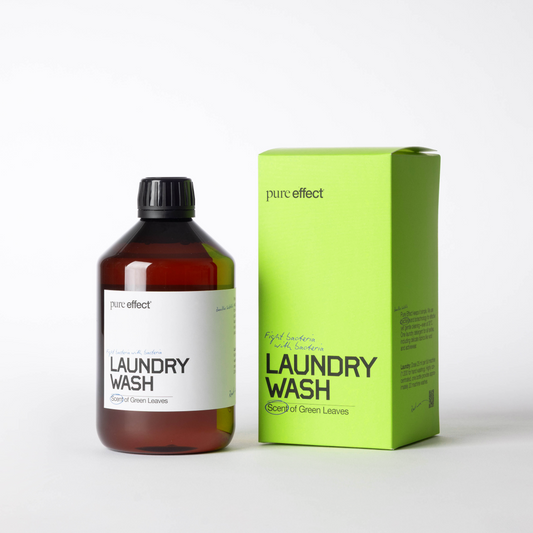
Why Synthetic Clothes Smell – Even After Washing
We’re often asked: why do synthetic garments – especially sports tops, lined blazers, and functional fabrics – smell of sweat even after washing? The answer lies in the chemistry of the fibres.
Synthetic materials like polyester and polyamide are comfortable, durable, and quick-drying. But the very properties that make them practical also create ideal conditions for sweat odour to cling and stay.
Here’s what actually happens inside the material – and how you can deal with it in a more sustainable way.
-
Synthetic fibres are hydrophobic and bind fat-based odour molecules
Polyester and polyamide repel water but readily bind lipids. The most stubborn sweat odours come from fat-soluble molecules produced when skin bacteria break down fatty acids in sweat, such as isovaleric acid, 4-methyl-3-hexenoic acid and certain thioalcohols. Because the fibres are hydrophobic, these compounds attach more easily to synthetics than to natural materials like wool or cotton.
-
Microscopic pits in polyester trap odour
To the eye, synthetics look smooth, but under a microscope the fibres show small pits and irregularities where skin oils, deodorant residues and bacterial by-products become embedded. Water and detergent struggle to reach these trapped molecules. This is why freshly washed synthetic garments often “wake up” and start smelling again as soon as your body warms them.
-
Quick drying means the odour stays
Fast drying removes moisture, but fat-based odour molecules remain in the fibre. Wool and cotton hold moisture differently and are better at releasing odour compounds during washing or airing out.
-
Why traditional washing doesn’t help
Conventional detergents are designed to dissolve dirt, pigments and water-soluble residues – not to break down fat-bound, biological odour molecules. Dry cleaning doesn’t solve the problem either, because the solvents can’t reach the biological residues embedded in the fibre.
What you can do
Treat the areas where the odour actually sits
In many garments, especially blazers, it’s the lining (often polyester or acetate) that holds the odour, not the outer fabric. Spray generously on the inside – armpits, back panel and shoulders. Our Bacillus bacteria produce enzymes that break down odour molecules instead of masking them. This works particularly well on synthetics, because the problem is biological residues trapped in the fibre. Let the garment dry in open air.
Repeat for vintage or older garments
Clothes with years of built-up odour often need two to three treatments, especially sportswear and vintage blazers.
Use steam to open the fibres
Steam can soften the fibre slightly and release odour compounds so the bacteria in the spray can reach them more effectively.
Avoid heavy deodorant build-up
Many modern deodorants contain aluminium and silicone components that, together with polyester, can form a stubborn film inside the fibre.
Wash less. Spot-treat more
Frequent washing of synthetics is both ineffective against odour and tough on the material. Treat locally and air out between wears instead.
Choose more natural fibres – even for training
Merino wool and other natural fibres absorb moisture, ventilate better and don’t bind sweat-producing bacteria in the same way synthetics do. The result is less odour, fresher garments and fewer unnecessary washes.
Summary
Sweat odour clings to synthetic fibres because their structure and chemistry make it easy for fat-based odour molecules to get in – and hard for water and detergent to get them out. By understanding where the odour sits and using methods that break down the molecules biologically, you can restore freshness to synthetic garments without washing them to pieces.
Sources
Zhou, C. et al. (2019). Odor adsorption and desorption on polyester and cotton fabrics.
Munk, S. et al. (2000). The effect of fibre type and fabric structure on odor development in textiles.
Hasegawa, Y. et al. (2004). Identification of new odoriferous compounds from human axillae.
McQueen, R. D. et al. (2014). Odor retention in cotton and polyester fabrics.
Park, J. & Joo, Y. (2013). Effect of fiber properties on odor generation in textiles.
Kite, A. C. et al. (2018). Odor retention of wool fabrics.




